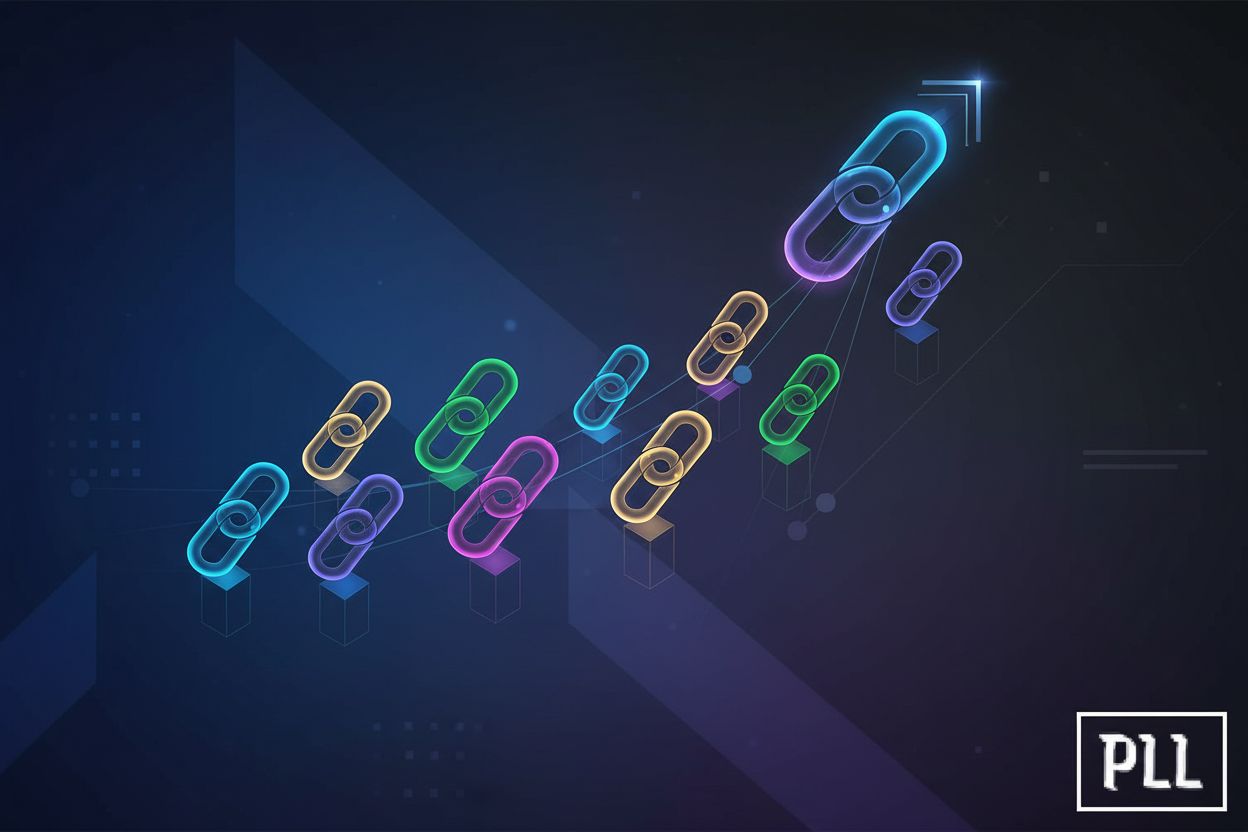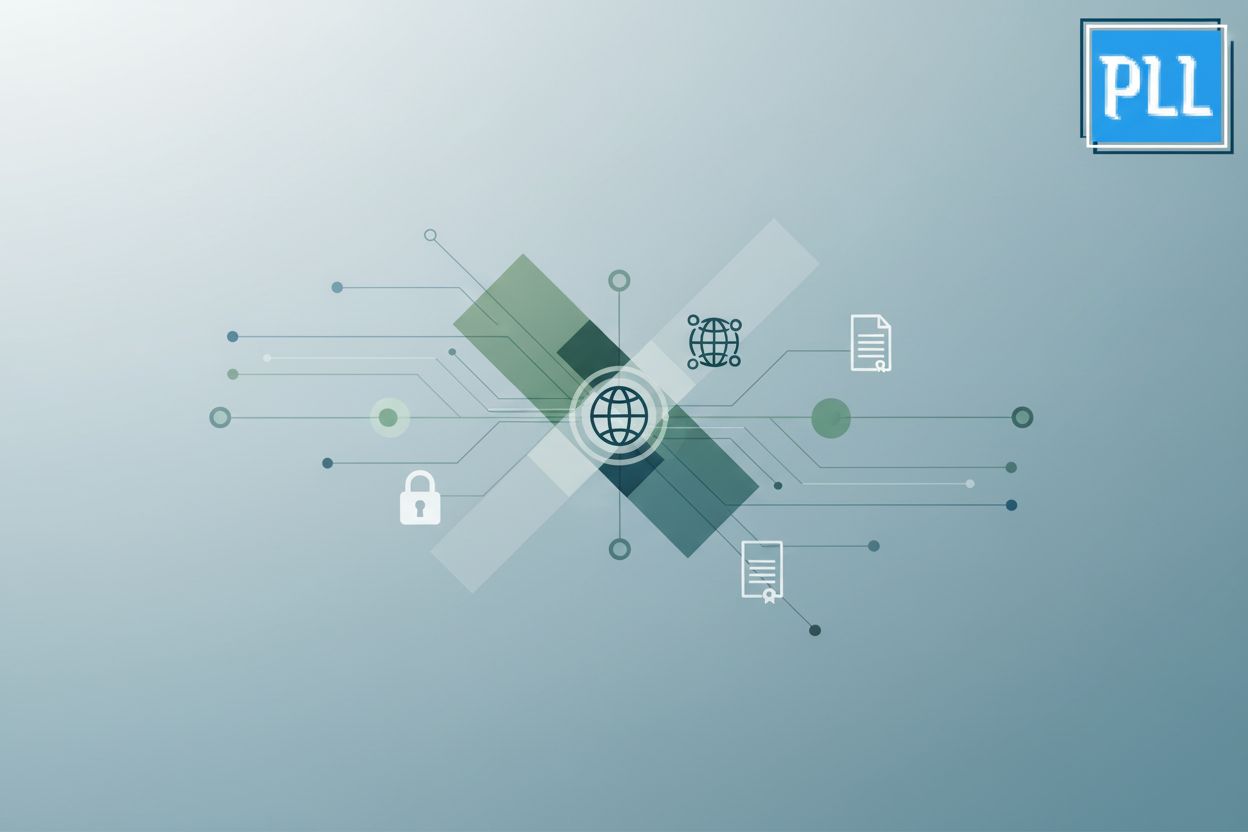Backlink Building Solutions for Enhanced SEO
TL;DR
Understanding BDI Agents: A Primer
Okay, so, BDI agents, huh? It might sound like something out of a sci-fi movie, but trust me, it's actually pretty cool – and useful. Ever wonder how to make ai a bit more… human-like in its decision-making?
At its heart, a BDI agent is a type of intelligent agent that operates based on three key components: Beliefs, Desires, and Intentions. Think of it like this:
Beliefs: This is what the agent thinks is true about the world. It's their knowledge base, and it might not always be accurate. For example, a BDI agent in a retail setting might believe that stocking shelves with a particular product always leads to an increase in sales – even though that might not always be the case.
Desires: These are the agent's goals or objectives. What does it want to achieve? A desire could be anything from "maximize profit" in a business context, to "avoid collisions" in a self-driving car.
Intentions: These are the desires that the agent has committed to achieving. Intentions are the agent's plan of action. So, if a delivery drone desires to deliver a package quickly, its intention might be to take the shortest route, even if it means flying over a slightly congested area.
Diagram 1 illustrates the fundamental Beliefs, Desires, and Intentions that form the basis of a BDI agent's internal state.
How's it different from other ai architectures, you ask? Well, unlike simpler ai systems that just react to inputs, BDI agents actually reason about their goals and beliefs before acting. For instance, a basic reactive agent might simply move left if it detects an obstacle directly in front of it. A rule-based system might follow a predefined set of "if-then" rules, like "if temperature > 30C, then turn on fan." BDI agents, however, go a step further. They consider their current beliefs about the environment and their overall desires to form intentions, which then guide their actions. This allows for more complex, goal-directed behavior.
And speaking of reasoning, it's super important. BDI agents use reasoning and planning to figure out how to best achieve their intentions. This might involve considering different options, weighing the pros and cons, and adapting their plans as new information becomes available. For instance, a BDI agent managing a hospital's resources might need to constantly re-evaluate its plans based on incoming patient data and staff availability.
Okay, so where did this BDI thing even come from? The philosophical roots go back to theories of human practical reasoning, particularly the work of philosophers like Donald Davidson, and computationally, it builds on foundational concepts in ai planning, like the STRIPS planner.
The deliberation process is where the magic happens. It's how agents evaluate their desires and decide which ones to turn into intentions. Maybe the agent has multiple desires, but limited resources. It needs to prioritize! This is a critical step of a well-designed BDI agent, intrinsically linked to how beliefs inform potential actions and desires shape goals.
Then there's means-ends reasoning. This is all about figuring out how to achieve those intentions. It's the planning stage, where the agent develops a series of steps to reach its goal. It's like a project manager for AI, breaking down a complex problem into smaller, manageable tasks, all while keeping its beliefs and intentions in mind.
One of the biggest strengths of BDI agents is their transparency. Because they explicitly represent their beliefs, desires, and intentions, it's easier to understand why they're doing what they're doing. This is crucial in areas like healthcare, where explainability is paramount.
Of course, there are downsides. BDI agents can be computationally complex, especially when dealing with lots of beliefs, desires, and intentions. (Modelling and verifying BDI agents under uncertainty - ScienceDirect) Also, representing knowledge in a way that the agent can understand and reason about can be tricky.
So, when are BDI agents most suitable? Think about situations where you need ai to be transparent, adaptable, and able to reason about complex situations. BDI agents can be awesome for data privacy applications, where understanding the ai's decision-making process is key.
Next up, we'll dive into some real-world examples of BDI agents in action. It's where things get really interesting!
BDI Agents in Data Privacy: Practical Applications
Okay, so we talked about what BDI agents are, but where do they actually shine? Turns out, data privacy is a pretty great place to start. Think about it: you're dealing with sensitive info, regulations galore, and the constant threat of a data breach. Seems like a job for some intelligent agents, right?
Here's the thing: data can be biased. Algorithms? Also biased. And if you're using that data to make decisions about people, well, you gotta make sure things are fair. BDI agents can actually help with that.
- Imagine a BDI agent designed to sniff out bias in training data. It's beliefs might include knowledge of different demographic groups and their historical representation in datasets. The desire? To ensure fair and equitable outcomes. The intention? To flag any data points that might lead to skewed results.
- For example, let's say you're building an ai system to assess loan applications. The BDI agent could monitor the training data for skews in demographic data. If it detects that a particular group is consistently denied loans, even with similar credit scores, it raises a red flag. It's like having a vigilant watchdog for fairness.
- Incorporating fairness constraints into the agent's desires is key. You could, for instance, tell the agent that it must prioritize models that have similar accuracy across different demographic groups, even if it means sacrificing overall performance slightly. It's about baking ethical considerations right into the ai's core objectives.
Keeping up with privacy regulations like CCPA or GDPR? It's a full-time job! But what if you could automate some of that?
- BDI agents can be programmed to understand and enforce privacy policies. Their beliefs are based on the specific rules and regulations. Their desires? To ensure compliance. Their intentions? To monitor data processing activities and take action when needed.
- Think of a BDI agent ensuring data is processed according to GDPR. It could monitor data flows, access logs, and consent records. If it detects that personal data is being processed without proper consent, it can automatically trigger an alert, or even halt the processing altogether.
- The beauty of BDI agents is their adaptability. As privacy regulations change (and they always do!), you can update the agent's beliefs and desires to reflect the new requirements. No more scrambling to rewrite your entire ai system every time a new law comes out.
Oh no, a data breach! What do you do? Well, a BDI agent can help you respond quickly and effectively.
- These agents can automate incident response workflows. It's beliefs might include knowledge of common attack patterns and vulnerabilities. Its desires is to minimize damage and restore data security. Intentions? To detect, contain, and remediate data breaches.
Diagram 2 outlines a typical incident response workflow managed by a BDI agent.
- For example, a BDI agent detects unusual activity on a database server. It analyzes the traffic, identifies the affected data, and automatically isolates the server to prevent further damage. It then notifies the security team, providing them with a detailed log of the incident. It's like having an automated first responder for data breaches.
- And it's not just about containment. The agent can also play a role in logging incidents, notifying relevant stakeholders, and generating reports for compliance purposes. It's all about streamlining the incident response process and minimizing the impact of a data breach.
It's important to remember this stuff, and it's important that your employees remember this stuff. Training can be boring, though. But what if training could be personalized, interactive, and even… fun?
- Privacient ai uses BDI agents to personalize and adapt data privacy training programs. The agent assesses each employee's knowledge level and learning style, and then tailors the training content accordingly. For example, if an employee consistently struggles with understanding consent mechanisms, the BDI agent might present them with more interactive simulations and case studies focused specifically on consent, rather than generic policy overviews.
- Interactive learning modules keep employees engaged, while gamification reinforces privacy principles and best practices. Think quizzes, simulations, and challenges that make learning about data privacy feel like a game.
- Privacient ai offers courses on data privacy, DPIA, CCPA, and AI risks. It's a comprehensive approach to data privacy training that helps organizations stay compliant and protect their data.
So, BDI agents aren't just some fancy ai concept. They're practical tools that can help organizations improve their data privacy practices in a variety of ways. Next, we'll explore the challenges and future directions of bdi agents in data privacy.
Implementing BDI Agents: A Step-by-Step Guide
Alright, so you're sold on BDI agents, huh? Now comes the fun part: actually building one. It's not as scary as it sounds, promise!
First things first, you gotta figure out what your agent believes, desires, and intends in the context of your data privacy application. It's like laying the foundation for a house; get this wrong, and the whole thing's gonna wobble.
- Beliefs: What does the agent need to know about the data it's protecting, the users whose data it is, and the privacy policies it needs to enforce? It's not just about having the data, it's about understanding it. For example, in a healthcare setting, a BDI agent needs to know what constitutes protected health information (PHI) under HIPAA.
- Desires: These should directly align with your organization's privacy goals. Wanna minimize data breaches? That's a desire. Wanna comply with GDPR? Another desire. Make sure these are specific and measurable.
- Intentions: This is where the rubber meets the road. How will the agent act on its desires, given its beliefs? If the desire is to prevent unauthorized data access, the intention might be to monitor access logs and flag suspicious activity.
Okay, now that you got a plan, you need a platform. Luckily, there's a few out there that makes building BDI agents way easier.
- Jason: This is a popular, open-source platform specifically designed for developing multi-agent systems using the AgentSpeak language. It's got a strong community and plenty of documentation, which is a lifesaver when you're starting out.
- AgentSpeak(L): This is the language that Jason uses. It's a logic-based programming language that allows you to directly express the agent's beliefs, desires, and intentions. It's kinda like teaching the ai how to think.
- Other options: You might also look into platforms like 2APL (A Practical Agent Programming Language) or JaCaMo, which offer different approaches to agent development and multi-agent systems.
When picking a platform, think about how well it scales, what languages it supports, and how active the community is. Open-source is great for tinkering, but commercial options might offer better support if you're working on a critical application.
Alright, time to write some code! And, yeah, it's gonna involve some trial and error.
- Best practices: Keep your code modular and well-documented. Use meaningful variable names, and don't be afraid to comment your code extensively. Trust me, you'll thank yourself later.
- Testing, testing, 1, 2, 3: You gotta test your agent thoroughly! Use simulations to see how it behaves in different scenarios. Throw some real-world data at it and see if it can handle the pressure. For a data privacy agent, you'd want to test scenarios like: unauthorized access attempts, data modification requests, compliance checks against evolving regulations, and handling of anonymized vs. personally identifiable information. Also, consider edge cases like corrupted data inputs or unexpected system outages.
- Evaluate: Keep an eye on how well the agent’s doing. Is it flagging the right things? Is it being too sensitive and causing false alarms? Fine-tune as you go.
So, your BDI agent is built, tested, and ready to roll. Now, you gotta get it to talk to your existing systems. This can be a bit tricky, but it's crucial for the agent to actually do anything useful.
- Connecting the dots: You'll need to connect your agent to databases, apis, and other systems that contain the data it needs to protect. This might involve writing custom connectors or using existing integration tools.
- Compatibility is key: Make sure your agent can understand the data formats used by your other systems. You might need to do some data format conversions to ensure everything plays nicely together. For instance, if your agent receives data in JSON format from a web service, but your internal database uses a proprietary binary format, you'd need to write code to parse the JSON and convert it into the database's expected structure.
Diagram 3 outlines the key steps involved in implementing a BDI agent.
This is super important: make sure all communication between your BDI agent and other systems is secure. Use encryption, authentication, and authorization to prevent unauthorized access to sensitive data.
Implementing BDI agents for data privacy isn't a walk in the park, but it's totally doable with a bit of planning and the right tools. And hey, knowing you're building a smarter, more transparent system for protecting sensitive data? That's a pretty good feeling.
Next up, we'll look at some of the challenges and future directions of BDI agents in the data privacy world.
Challenges and Future Directions
Okay, so BDI agents are pretty neat, right? But like any technology, there's gonna be some bumps along the road – and plenty of room to grow.
One of the biggest hurdles is explainability. It's cool that BDI agents are more transparent than some ai systems, but that doesn't mean they're perfectly clear. Sometimes, it can still be tough to figure out exactly why an agent made a certain decision. And in data privacy, that's a big deal.
- We need better ways to visualize what's going on inside the agent's "head." Think about it: if you could see the agent's beliefs, desires, and intentions laid out in a clear, intuitive way, it'd be much easier to understand its reasoning. Maybe something like a decision tree that shows all the different paths the agent considered before settling on a particular action. Tools like AI visualization libraries or interactive dashboards could help here.
- Another approach is to develop techniques for querying the agent. Imagine being able to ask the agent, "Why did you flag this particular piece of data?" and getting a detailed explanation in response. This requires some serious natural language processing, but it could be a game-changer for building trust. Research in explainable AI (XAI) and natural language understanding (NLU) is crucial for this.
Building trust isn't just about technical solutions, though. It's also about accountability. We need to design BDI agents in a way that makes it clear who's responsible for their actions. Is it the developers? The data scientists? The organization that's deploying the agent? These are tough questions, but we need to start grappling with them now. Beyond bias and autonomy, we also need to consider data security risks introduced by the agent itself (e.g., if the agent's own logs are compromised) and the potential for misuse by malicious actors who might try to manipulate the agent's beliefs or intentions.
Another challenge is scaling. BDI agents can be computationally intensive, especially when you're dealing with tons of data and complex scenarios. A BDI agent monitoring real-time transactions for fraud detection in a large financial institution needs to handle thousands of transactions per second. That's no small feat.
- One approach is to explore distributed architectures. Instead of having one giant BDI agent, you could have a bunch of smaller agents working together in parallel. This can help distribute the workload and improve performance through parallel processing and load balancing.
- Cloud computing is another obvious answer. By leveraging the power of the cloud, we can access the resources we need to run even the most demanding BDI agents. Plus, cloud platforms often offer specialized tools and services for ai development, which can make the whole process easier.
So, what's the future hold for BDI agents in data privacy? I think we're gonna see some really exciting developments in the years to come.
- One big trend is the combination of BDI agents with machine learning. Imagine a BDI agent that uses machine learning to learn new beliefs and refine its decision-making process over time. For example, a BDI agent responsible for detecting anomalous user behavior could use a machine learning model to identify patterns of "normal" behavior. The BDI agent would then use these learned patterns as part of its beliefs to more accurately identify deviations and form intentions to investigate. This could lead to ai systems that are both intelligent and adaptable. It's like giving the agent the ability to learn from its mistakes (or successes!).
- BDI agents could totally revolutionize data governance. They offer a way to automate compliance, enforce privacy policies, and ensure that data is used responsibly. It's like having a built-in ethics officer for your data.
But with great power comes great responsibility, right? We need to be mindful of the ethical implications of BDI agents and make sure they're developed and deployed in a responsible way. We don't want to create ai systems that perpetuate bias or undermine human autonomy. To mitigate these risks, BDI agents can be designed with explicit ethical constraints as part of their desires, and their reasoning processes can be audited to ensure they don't inadvertently lead to discriminatory outcomes. It's up to us to ensure that BDI agents are used for good.
Diagram 4 highlights key future directions and challenges for BDI agents.
Ultimately, BDI agents have the potential to transform data privacy and responsible ai. Sure, there are challenges to overcome, but the potential benefits are huge. By focusing on explainability, scalability, and ethical considerations, we can unlock the full potential of BDI agents and create a future where ai is both intelligent and trustworthy.









